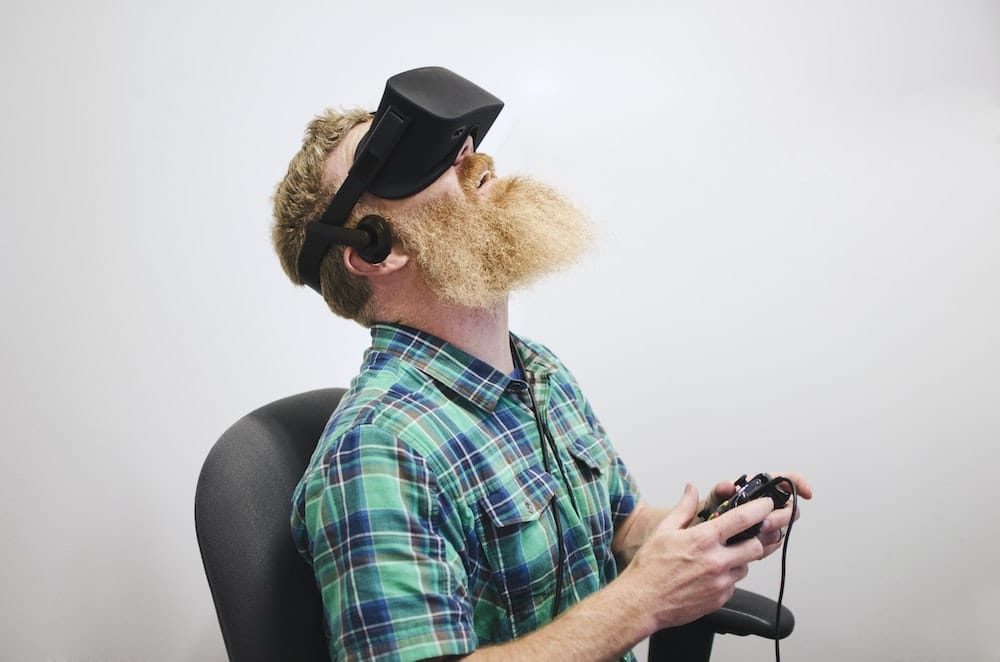In an era characterised by rapid technology advancements, the retail industry has been transformed significantly. Augmented reality (AR), a technology that overlays digital information on the real world, is significantly reshaping the retail landscape. For shopping enthusiasts, this digital transformation has brought about an enriched shopping experience. Central to this revolution is the UK’s retail furniture industry, where augmented reality has revitalised the age-old practice of furniture shopping. This article will delve into how AR is being utilised within the UK’s retail furniture industry, its impact on customer experiences, and the future projections within this sector.
Augmented Reality: Redefining the Furniture Shopping Experience
The advent of augmented reality has transformed the furniture shopping experience from a traditional, physical store visit to an interactive, engaging, and hassle-free digital adventure. The process begins when customers download and install a retailer’s AR app on their smartphones. Upon launching the app, customers can select the furniture item they wish to view. The AR technology then overlays the product’s 3D model onto the customer’s real-world environment, giving the illusion of the furniture’s physical presence in that space.
A voir aussi : How to Implement Smart Irrigation Systems in UK’s Urban Farming Projects?
This immersive experience enables customers to visualise how a piece of furniture would look in their actual living space, without them having to leave their homes. Besides, it also allows customers to experiment with different furniture styles, colours, textures, and sizes, which can significantly aid in their decision-making process.
How Augmented Reality Benefits Retailers and Customers
For retailers, augmented reality brings forth numerous advantages. It enables them to showcase their entire product catalogue virtually, eliminating the constraints of physical showroom space. Retailers can also update their product range seamlessly, allowing them to introduce new designs and styles promptly.
Cela peut vous intéresser : How to Enhance Air Quality Monitoring with IoT Devices in UK Schools?
Moreover, AR can provide retailers with valuable insights about customer preferences and shopping behaviour, enabling them to fine-tune their product offerings and marketing strategies. This technology, through its interactive nature, has the potential to drive customer engagement, increase sales, and boost brand loyalty.
From a customer’s perspective, AR simplifies the furniture buying process by saving time, reducing uncertainty, and enhancing the overall shopping experience. It eliminates the need for multiple store visits, which can be time-consuming and possibly futile if the desired product is out of stock. By enabling customers to see how a particular product would look in their space, AR reduces the chances of costly returns and exchanges.
The Growing Popularity of AR in UK’s Retail Furniture Stores
The use of augmented reality in UK’s retail furniture stores is gaining momentum. Well-known brands have recognised the potential of AR and have integrated it into their business models. One prime example of this is IKEA’s AR app, IKEA Place, which allows users to virtually ‘place’ furniture in their homes. Similarly, John Lewis & Partners has also launched an AR feature on its app, enabling customers to view sofas and armchairs in their homes.
Indeed, the introduction of such apps has been met with positive customer responses. They appreciate the convenience, personalisation, and immersive experience that these apps offer. Meanwhile, the retailers enjoy increased sales, customer retention, and valuable customer data.
Future Projections for Augmented Reality in the Retail Furniture Industry
Looking forward, the role of augmented reality in the retail furniture industry is expected to expand. As technology continues to advance, AR experiences will become more realistic, interactive, and personalised. We might see features enabling customers to change the colour, texture, or pattern of a piece of furniture in real-time, further enhancing their buying decision process.
Moreover, as more and more customers become familiar with AR technology, the demand for AR-enabled shopping experiences will increase. This, in turn, will drive more retailers to adopt AR, thereby fostering the growth of this technology in the retail furniture industry.
In a nutshell, the future of the retail furniture industry in the UK looks bright, with augmented reality at its core. As the integration of AR in this sector continues, customers can expect more exciting, convenient, and personalised shopping experiences, while retailers can look forward to increased business growth and improved customer loyalty.
Augmented Reality and Customer Engagement in the Furniture Industry
The continual integration of augmented reality in retail businesses, particularly the furniture industry, has transformed the customer engagement process. This technology has shifted the focus from mere sales transactions to creating memorable, interactive shopping experiences, thereby mutually benefiting both the retailers and customers.
Augmented reality retail offers customers a personalised, engaging, and immersive shopping experience. By utilising the retailer’s AR app, customers can virtually ‘try before they buy’ from the comfort of their homes. This reality shopping experience involves visualising the furniture in their own space, experimenting with different styles, colours, and sizes, and making an informed purchase decision. Notably, this not only enhances the customer experience but also significantly reduces the time, effort, and uncertainty traditionally associated with furniture shopping.
From the retailer’s standpoint, this technology offers a powerful tool to engage customers in real time. The interactive nature of AR apps encourages customers to spend more time exploring and experimenting with the retailer’s offerings. This, in turn, can lead to higher sales and improved customer loyalty. Furthermore, these apps can provide valuable insights into customer preferences and behaviours, enabling retailers to tailor their offerings and marketing strategies accordingly.
Moreover, augmented reality is well-suited for the digital age, where social media plays a critical role in marketing and customer engagement. Furniture retailers can leverage AR to create shareable, interactive content, thereby boosting their online presence and attracting potential customers.
The Future of Augmented Reality in the UK’s Furniture Retail Industry
It is clear that augmented reality has redefined the UK’s furniture retail industry and significantly improved the shopping experience. Looking ahead, this technology is set to play an even more integral role.
As AR technology continues to evolve, the shopping experiences it offers will become increasingly realistic and interactive. Future projections suggest the potential for real-time modifications, such as changing the colour, texture, or pattern of a piece of furniture to suit customer preferences. This will further aid customers in their decision-making process and reduce the likelihood of returns or exchanges.
Moreover, as more customers become familiar with AR and its benefits, the demand for AR-enabled shopping experiences is poised to grow. This will, in turn, motivate more retailers to adopt AR, contributing to the widespread growth of this technology in the retail industry.
In conclusion, the future of the UK’s furniture retail industry appears promising, with augmented reality at the helm. As more retailers adopt AR and customers continue to embrace this technology, the industry is poised for a revolution. This evolution will not only shape how customers shop for furniture, but it will also redefine customer expectations and experiences. Ultimately, AR offers a win-win scenario for both customers and retailers, making it a pivotal component of the modern retail landscape.











